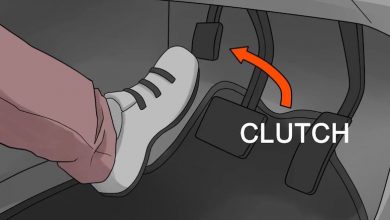What is Engine Flush? Does it work and is it safe

IS THIS PRODUCT GOING TO DAMAGE OR RESTORE YOUR ENGINE?
When it comes to successful car maintenance, knowing how to keep your engine in order and running smoothly is vital. That’s why there is such a huge variety of engine oils, degreasers, sealants, cleaners, starting fluids, and antifreezes, to name just a few.
Another product which is rapidly gaining popularity among motorists is engine flush. It is far from clear, however, whether or not this product is going to help improve your engine’s performance and protect it, or if it’s going to risk doing serious damage to your engine. Does engine flush work and is it good or bad?
WHAT IS ENGINE FLUSH?
An engine flush is a chemical intended to remove sludge, deposits, and other dirt that has accumulated through the combustion process from your engine. Engine flush, like synthetic or synthetic blend motor oils, contains additives designed to clean the engine’s internal moving parts and boost performance. The basic theory is that running engine flush through your engine will clean out deposits left in the engine from the combustion process and thus result in a clean, more highly functional, engine. Engine additives are simple to use: they are added to the car’s oil-filler port and leave the car engine idle for 10–15 minutes (many top brands boast that it is effective after just this short time). After you can change the oil and replace the oil filter.
Today’s modern engine oils already come with detergent and dispersant packages that do a great job of cleaning lubricated surfaces and keeping sludge deposits away from them. But these additives only last for so long. If you don’t change your oil as often as you should, that, too, can lead to oil sludge making its way to places you don’t want. If this is the case, engine flush could be the best option for you.
WHY MIGHT ENGINE FLUSH BE IMPORTANT?
Deposits and sludge build up in the engine for several reasons, one of the most common of which for most drivers is frequent short journeys. Taking a lot of short trips and stop-and-go driving is surprisingly hard on the lubricating oil because the moisture that builds up in the oil during the previous rest period won’t have time to evaporate and leave the oil. This means the oil becomes diluted and increases viscosity and in the end it doesn’t lubricate the moving parts of the engine as well, leading to increased wear.
Hot and dusty environments are also hard on the engine oil as air-borne dirt particles can be taken in. Like the increased moisture, high heat breaks down the engine oil and deposits of burnt oil byproducts can build up very quickly. As it settles, all of this engine sludge can clog narrow oil passages or the screen on the oil pickup tube, restricting oil flow to vital parts of the engine, especially the upper valve train.
All of this sludge and dirt means a very unclean engine and that is not good news for the thermal efficiency of the engine. Since motor oil acts as a coolant for the engine, as more oil turns to sludge the oil becomes hotter and the engine risks overheating. The deposits on the pistons and in the combustion chambers will also increase the hydrocarbon emissions. In petrol engines, catalytic converters will additionally have to work harder to remove the waste products and break down or have to be replaced sooner. Deposits can also cause the piston rings to stick together, reducing engine compression and the overall horsepower of an engine, directly impacting the car’s performance.
The real problems of an unclean engine, therefore, are a more ineffective and inefficient engine in which serious damage could be caused and which risks breaking down. It’s vital to keep it clean, but is engine flush going to work in your engine?
BENEFITS OF ENGINE FLUSH
Engine flush companies claim that ‘engine flush is specially formulated to rapidly dissolve harmful engine deposits and maintain efficient oil circulation throughout the entire engine, helping to protect vital engine wear surfaces throughout the flush’. In theory, this sounds ideal. A good engine flush can help loosen deposits and dissolve sludge, returning your engine to like-new condition. It could be, then, the first step in helping restore a previously neglected vehicle to its original condition.
Another benefit of engine flush is that it could improve your fuel economy. Contaminants circulating throughout your engine can result in oil breakdown and increased viscosity. Additionally, the sludge and deposits which build up on engine parts can increase resistance, which wastes fuel. Cleaning your engine with an engine cleaner flush can help parts move more efficiently, maximizing your fuel economy and saving money.
One benefit that will only increase in importance in the coming years is that engine flush can help minimize emissions. The risk of piston-rings sticking which we mentioned earlier means that oil can find its way into the combustion chamber and burn. The result is harmful deposits and this will increase exhaust emissions as the burned oil exits the tailpipe. The best oil flush treatment helps free stuck rings and minimize oil consumption, in effect lowering your emissions.
DANGERS OF ENGINE FLUSH
That said, some potential dangers come with using engine flush and many have claimed engine flush can damage an engine.
Ford’s view of engine flush products is that they should not be used: ‘do not use oil additives or other engine treatments. Under certain conditions, they could damage the engine. If you do use one and there is a subsequent engine problem, your warranty will no longer be valid.’ This could be perhaps one of the most worrying things. Even if an engine is not damaged, your warranty might be voided and if something else, completely unrelated to your engine, goes wrong with your car, you might have lost your right to get it repaired under warranty by the manufacturer because of using an engine flush.
The reason that many car manufacturers do not recommend using engine flush is because they are afraid that the chemicals may react with rubber or plastic components in the engine at the same time as they remove the dirt and sludge and cause premature engine degradation and failure.
Other car enthusiasts are concerned that engine flushes may dislodge chucks and deposits from critical arrears of the engine, causing them to move to other, even more important areas and do greater damage. Some are also convinced that an engine flush treatment may not completely dissolve the sludge and just break it up instead. The sludge may then be distributed more widely around the engine, rather than located in only certain areas, and could trigger an even greater reduction in the engine’s performance.
The real danger of using engine flushes could be when they are used in high-mileage cars. For cars that have already had a long lifespan, the engine seals may be worn and leaking. In these cases, the combination of oil and sludge is almost acting as a sealant, essentially keeping them viable and masking their true condition.
If this is the case for your engine, it is not worth using an engine flush. You would find it best to leave well enough alone and not disturb the sludge that may be the only real barrier keeping oil from leaking past the seals in the older engine. If you do use it in this situation, you could end up with a leaking engine or worse.
SO IS ENGINE FLUSH WORTH IT?
The importance of having a clean engine cannot be understood, so any product which tries to actively clean the engine’s moving parts is clearly well intended. But, using a product manufacturers do not recommend is always a risk, especially when it comes to something you can see in front of you.
Many drivers report substantial gains when using engine flush products and swear by them, but others claim to have seen no change in performance. While engine flush cannot be a substitute for a well and regularly maintained engine that is regularly cleaned and has its oil replaced, it could be the right product for an engine that needs some attention.








